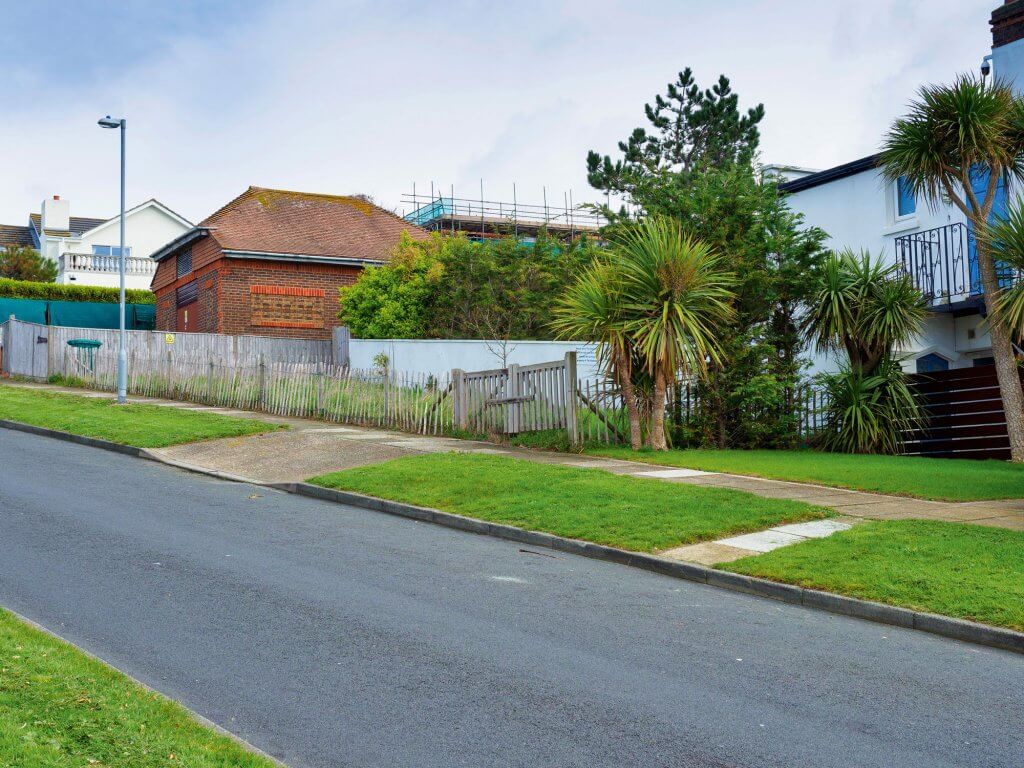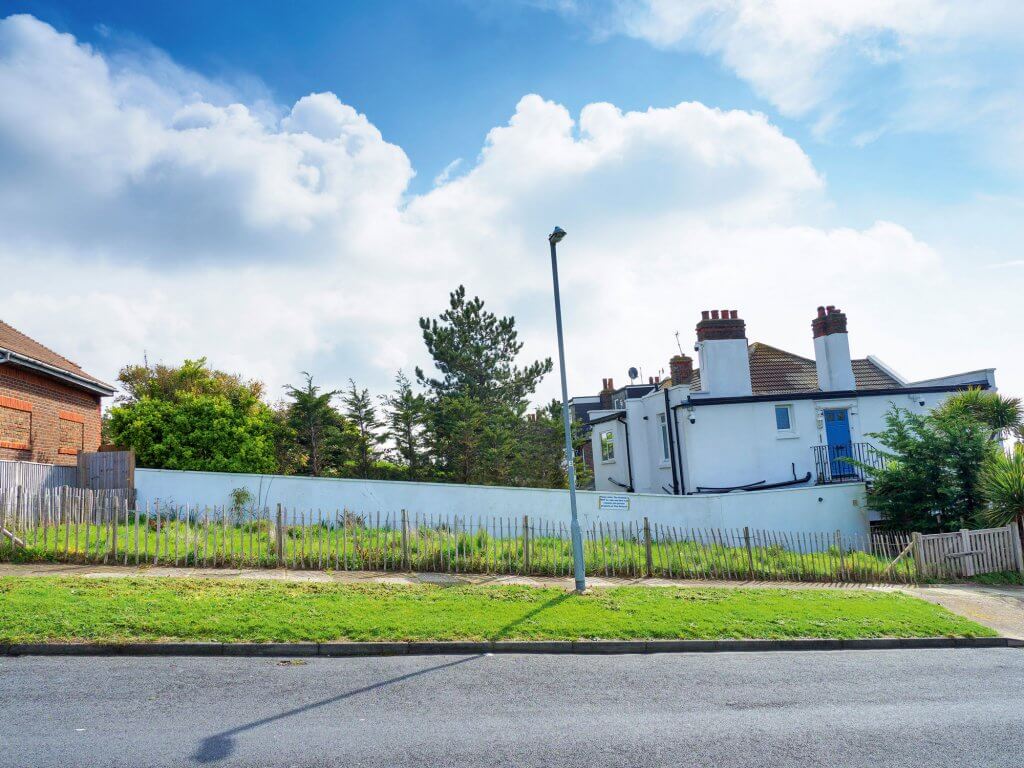Graham and Claire Brennan are seeking an early retirement, having sold their successful business. They fancy a self build, partly to keep themselves busy and partly to ensure they get the type of house that would suit their needs.
Sea views and good access to a town centre are key requirements. A promising looking plot has popped up on the market in an edge of town location on the south coast. Could this be a good spot for them?
Self build specifications
Graham and Claire are quite specific about the type of property they would like.
Apart from their location needs, they have a very specific package of requirements. These requirements are not easily found amongst the current housing stock.
They’d ideally like a contemporary home with an open-plan living area that is suitable for entertaining. They want two bedrooms with ensuite bathrooms as well. They also require enough space for a cinema room in which they can indulge their shared love of film.
It’s also important that there is only a very small garden, as the couple intend to travel a good deal. They want something that’s very low maintenance.
Taking this all into consideration, a modest site in a location where modern architecture would fit in should offer a viable way forward.
The building plot
This site is a narrow strip, about 8m deep by about 20m long. It slopes down from the northern end to the south. It runs alongside a quiet side street at the back of an adjacent property.

The compact coastal plot may be a modest size, but it is brimming with planning potential
Given the generally generous plots in the vicinity, this one is actually surprisingly compact. At its southern end, there is an existing crossover from the street to some gates, but no obvious sign of what this access point might have served in the past.
Adjoining the site to the north is what appears to be an old Victorian pumping station; a small building with bricked up windows. This does not seem to be in use, but it would certainly
be worthwhile looking into what it is and whether it has any planning history.
Understanding planning permission
The plot has consent for a new detached, two bedroom abode with a striking contemporary design.
The layout pushes the dwelling into the top end of the land, with a small lawn area in the middle and a covered parking space at the lower end, accessed from the existing crossover.
It has two floors set into the hillside, a basement and a partial green roof. There are also extensive windows on the south elevation providing views of the sea, which lies about 400 metres away.
Internally, the layout is upside-down, with the living area on the top floor plus a balcony from which the full benefit of the vistas could be enjoyed. The two bedrooms and two bathrooms – one ensuite – are at ground level. Below that, the basement has a large games room and storage space.
On the face of it, it’s a remarkably close fit to Graham and Claire’s requirements. However, the approval only has another eight months to run, which could present a challenge if they want to change the design at all.

The sloped plot already has permission for a two-storey house set into the hillside
It was also granted subject to no less than 19 conditions. While many of these are standard, requirements to undertake tests to investigate any possible contamination, and to ensure both energy and water consumption are minimised could all add additional costs to the price of construction.
It is unclear why the contamination constraint has been imposed. Hence, it would be advisable for Graham and Claire to check this out this at an early stage, as its identification and removal can be expensive.
Another condition also withdraws permitted development rights for extensions and garden outbuildings, but this one is more understandable given the constrained nature of the site in question.
Making amendments to the planning
The land not only has planning consent, but all the attached stipulations have also been approved, so the details of materials, landscaping and so-on are all pinned down. If Graham and Claire want to make changes they need to proceed cautiously.
As the approval only has eight months until expiry, they would have to be very careful to make sure that doesn’t happen. The online file shows that many of the neighbors had objections and that a committee decided on the final application.
Renewal of permission isn’t something that should be taken for granted. All things being equal, a request to renew an expired consent should be fulfilled. But in practice, things can get complicated.
Policies can be altered, planning officers leave and the councillors on the committee change too.
A solution here would be for Graham and Claire to start work on the permitted project. That could be something relatively minor, like starting the excavation of a foundation or digging a trench for services. It would be prudent for them to notify the local authority that work has started.
Once building is underway, the permission remains valid for the foreseeable future. This would allow Graham and Claire as much time as they need to sort out any changes they might want to make and to seek consent for them.
Starting the self build
Because the permitted design includes a basement and retaining walls, Graham and
Claire should get some input from a surveyor, architect or builder on the likely construction cost, as it is going to be considerably higher than it would be for a standard project.
They should also look into the price of the archaeological investigations and monitoring during the excavations, as these could also be significant. This will help them determine a sensible level of offer.
Discussion with the selling agent, and ideally one or two other local estate agents, should give them a good idea of the likely value of the completed property. This should also guide their thinking on what to offer.
The post Plot Watch: A Compact Coastal Site appeared first on Build It.
Article reference Plot Watch: A Compact Coastal Site
No comments:
Post a Comment